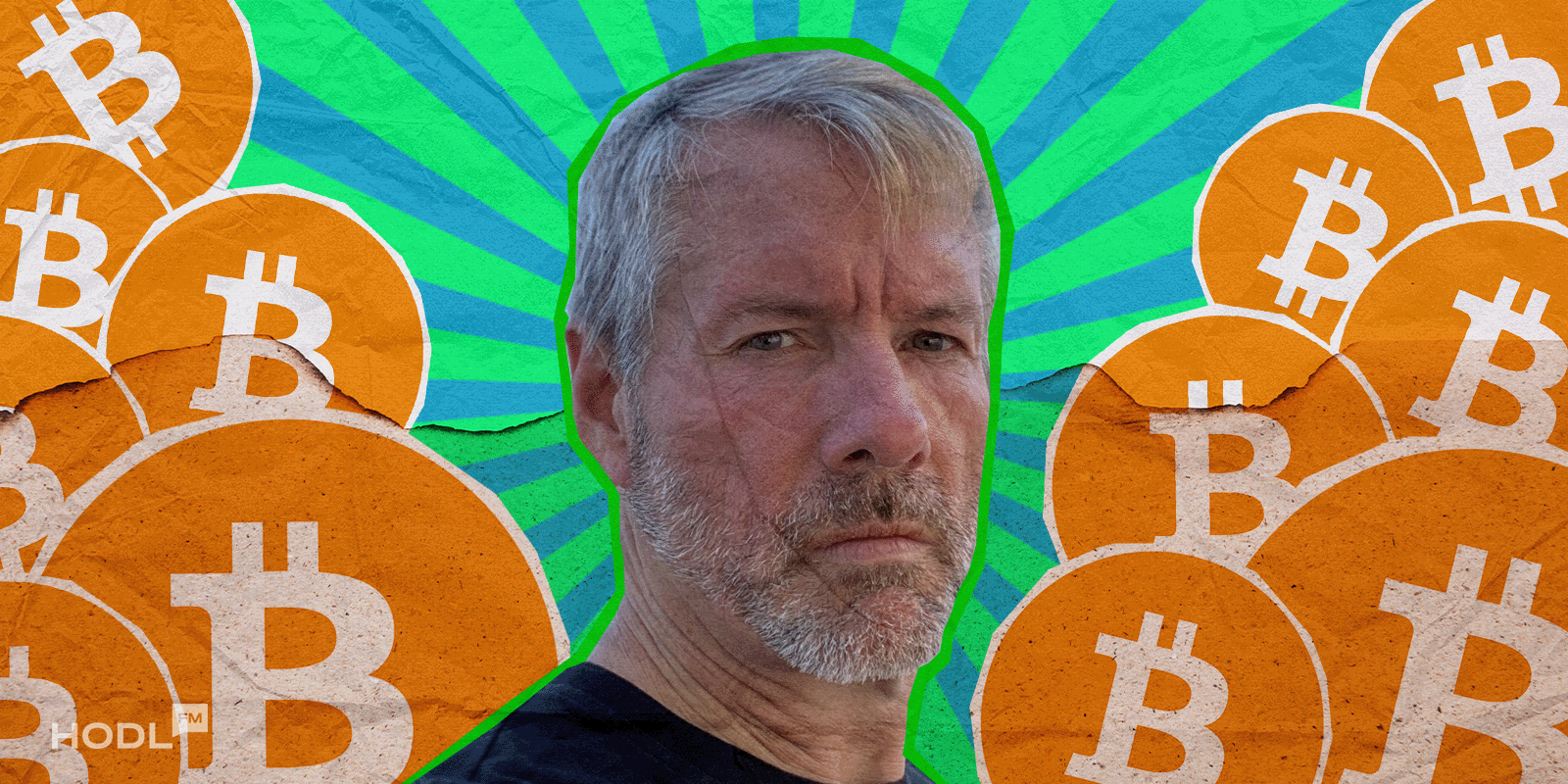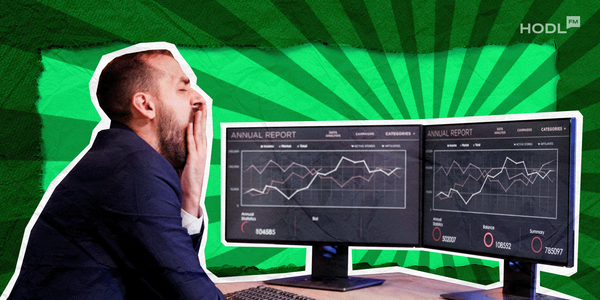Michael J. Saylor is a prominent figure in modern finance, known for his strong views on technology and digital assets. He went from being a standard tech CEO to being Bitcoin's most ardent corporate supporter. As Executive Chairman of Strategy (formerly MicroStrategy), Saylor has led one of the largest corporate Bitcoin acquisition strategies to date. This has changed the way institutions see cryptocurrencies as a treasury asset.
The purpose of this article is to teach readers about Michael Saylor's career, beliefs, and impact on the use of Bitcoin in institutions. This is intended for informative purposes and should not be taken as financial or investment advice.
Early life and career
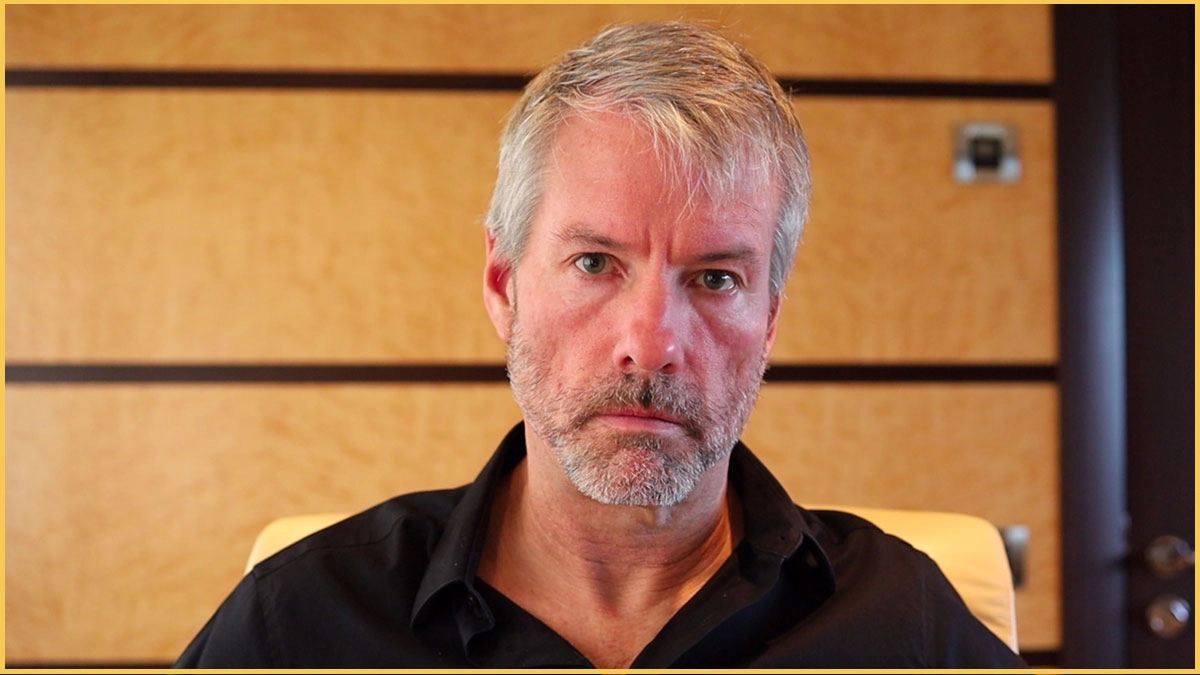
Born in Lincoln, Nebraska, in 1965, Saylor grew up in a U.S. Air Force family. On a full Air Force Reserve Officer Training Corps scholarship, he earned dual degrees from MIT in Aeronautics and Astronautics and Science, Technology, and Society. His thesis, called "A Mathematical Model of a Renaissance Italian City State," on system dynamics foreshadowed his data-driven approach to business. After graduating in 1987, he built computer simulations for firms like DuPont and Exxon before founding MicroStrategy.
Building MicroStrategy
Saylor started MicroStrategy with Sanju Bansal in 1989 when he was 24 years old. He used his knowledge of computer simulation to help businesses get "intelligence everywhere." Relational online analytical processing (ROLAP) was a new way for the corporation to do business information.
MicroStrategy quickly became well-known, and its Initial Public Offering (IPO) in 1998 (NASDAQ: MSTR) was a big success. By the end of the 1990s, Saylor's personal wealth had grown to billions of dollars, making him one of the most well-known businessmen during the Internet boom.
But after this early triumph, things went very wrong. In 2000, during the dot-com bust, MicroStrategy's stock price fell, and Saylor lost his billionaire status because of bad accounting methods that led to a financial restatement. This time was a harsh lesson in how unstable the market can be and how to run a business. It led him to focus on protecting his money and finding an asset that couldn't be taken away and wouldn't lose value.
Saylor also showed that he was a great entrepreneur by starting other successful businesses, such as Alarm.com, which was one of the first companies to offer home automation and security, and Angel.com, which he sold for $110 million in 2013. In addition, he has started the Saylor Academy (Saylor.org), a non-profit that has given free college education and job training to more than two million students around the world.
MicroStrategy remains a leading provider of enterprise analytics and mobility software. The company has been focusing more on its digital asset strategy lately, which has led to discussions over how to classify it. In February 2025, the company underwent a significant rebranding from MicroStrategy to Strategy, signaling its evolution beyond traditional business intelligence software.
Saylor and Bitcoin
Michael Saylor didn't slowly or accidentally become a Bitcoin maximalist; it was a very logical, analytical change based on his study of global macroeconomic trends.
Saylor was publicly doubtful about Bitcoin for a long time. But by early 2020, when the world reacted to the COVID-19 outbreak and central banks started huge amounts of quantitative easing, Saylor became very worried about how much fiat currencies were losing value. His main point was simple: keeping cash reserves meant that his company would lose purchasing power in a way that was unavoidable and harmful.
In August 2020, Saylor made a historic decision: MicroStrategy would use Bitcoin as its main treasury reserve asset. He didn't see Bitcoin as a currency or a volatile speculative token; instead, he saw it as the best technical solution to the challenge of keeping wealth safe, calling it the "apex property of the human race."
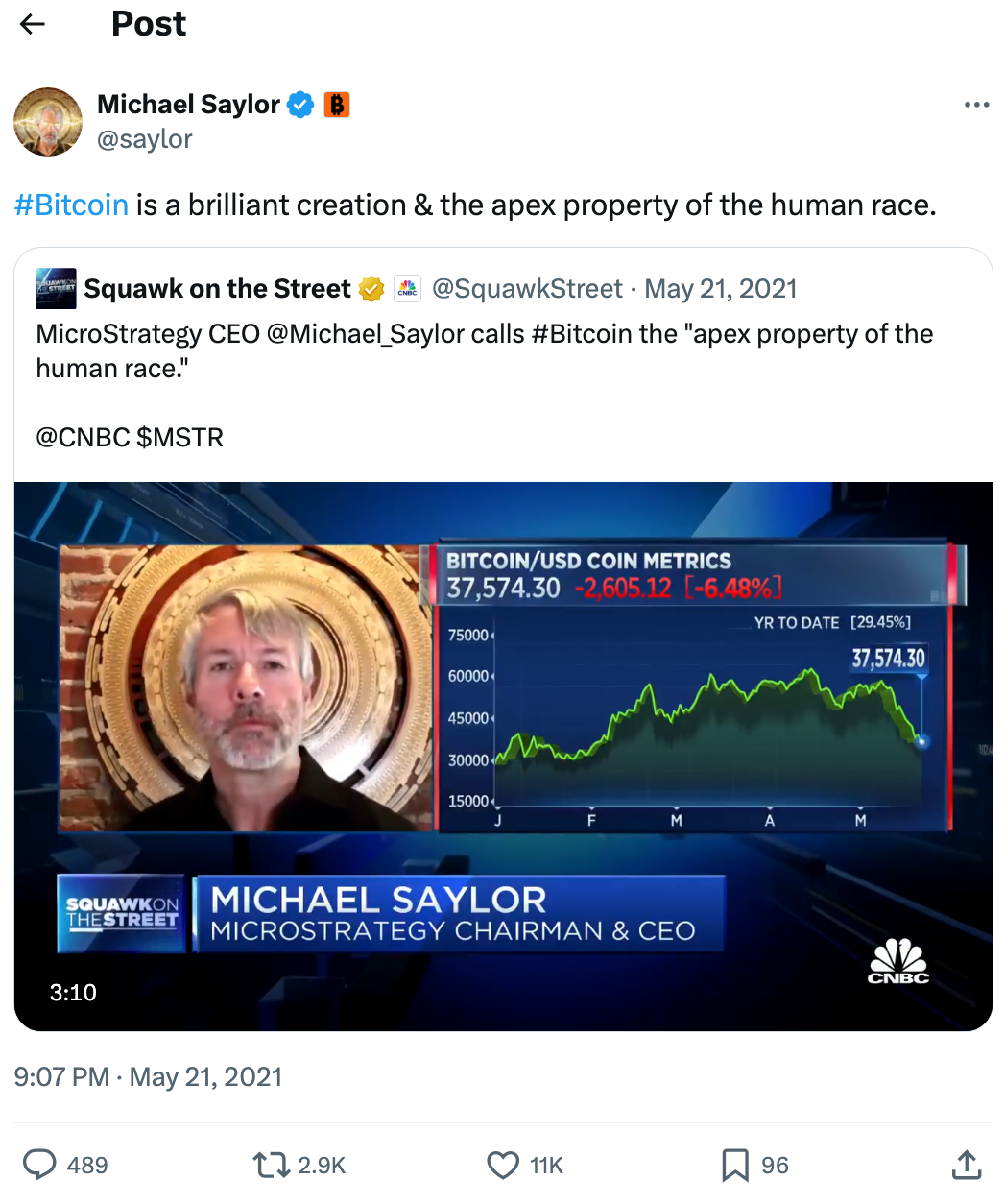
Saylor's concept is based on the idea that Bitcoin is the sole digital version of the physical world's scarcity (land, gold, and other goods). He calls it "digital real estate" a lot since it has a fixed supply cap of 21 million coins and is decentralised and doesn't need permission to use, which makes it safe from inflation and political dangers that come with regular assets.
He didn't just decide to keep Bitcoin; he also made it the main goal of the company's capital allocation. Saylor said:
“As Executive Chairman, I will be able to focus more on our Bitcoin acquisition strategy and related Bitcoin advocacy initiatives, while Phong will be empowered as CEO to manage overall corporate operations.”
How much Bitcoin does Michael Saylor own?
The size of Strategy's assets and the aggressive, debt-fueled strategy utilised to get them are the best ways to judge how committed Saylor is to Bitcoin.
Strategy's method includes consistently dollar-cost averaging (DCA), buying BTC at all price points, and using a lot of financial leverage.
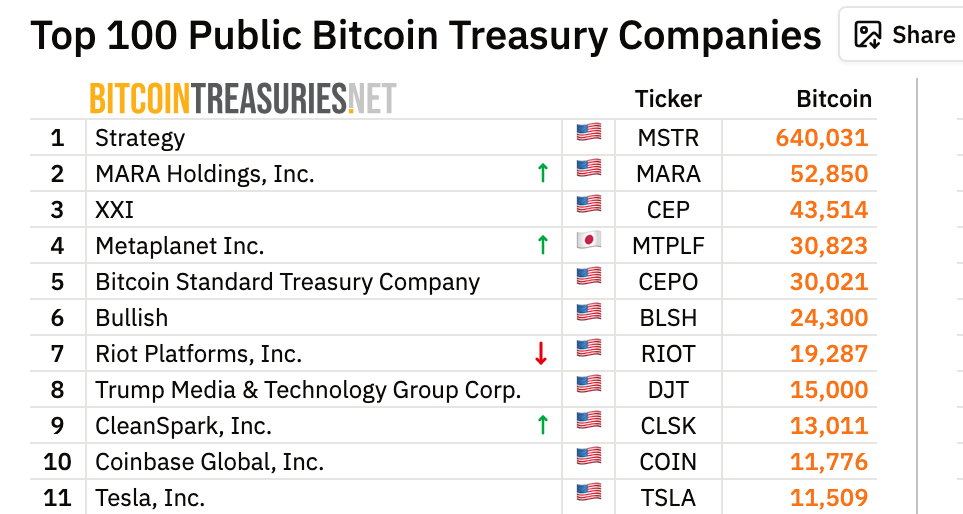
Strategy has 640,031 BTC according to Bitcoin Treasuries on September 21, 2025. Strategy is now the largest public corporate holder of BTC in the world, thanks to a series of debt and equity offers that have added to this amount.
Saylor’s personal holdings are also substantial. He said in October 2020 that he owned 17,732 Bitcoins, which he bought for $175 million. This personal stake makes his beliefs and incentives even more in line with the company's objective. Saylor is still quite enthusiastic and buys things through the company regularly. For example, the company's acquisition strategy continues aggressively, with recent purchases adding $100 million in Bitcoin to the treasury.
Saylor’s influence on Bitcoin adoption
Saylor's impact goes much beyond the balance sheet of Strategy. Saylor wrote "The Mobile Wave: How Mobile Intelligence Will Change Everything," which came out in 2012 and made it onto the bestseller lists of both The New York Times and The Wall Street Journal. The book predicted how mobile, cloud, and social networks would change things, which gave him a reputation as a technology futurist.
Saylor's highly publicised purchase of a corporate treasury set a precedent and gave other corporations thinking about doing the same thing some respectability. His many public appearances, which were often long, technical conversations, slowly broke down the most prevalent reasons institutions provide for not holding Bitcoin.
Saylor has built himself a huge following on social media, especially on X (@saylor), where he turns complicated financial ideas into short, catchy quotes. He makes Bitcoin seem like a moral, technological, and economic must-have. His four-hour interview with Lex Fridman, in which he talked about Bitcoin, inflation, and the future of money, got more than 11 million views on YouTube.
Michael Saylor's Bitcoin prediction
Saylor's predictions are based on a system-wide view of global capital rotation, which is different from what short-term market observers do.
His view is that Bitcoin will keep taking value from traditional repositories of wealth like real estate, gold, and government bonds, and will eventually become the most important digital asset class.
Saylor has said that he thinks Bitcoin might reach $1 million per coin in the next few years, as inflation continues to lower the value of fiat money. His most quoted long-term projection, which is based on models shown at conferences, says that BTC may reach $13 million per coin by 2045 in a base-case scenario. In a bull case, it could reach $49 million per coin.
He says that these kinds of projections are not just guesses, but the logical result of using system dynamics to look at the asset's fixed, limited supply against an endless and rising supply of capital. Michael Saylor often tweets about how he thinks Bitcoin will go up in the long run.
How much is Michael Saylor worth?
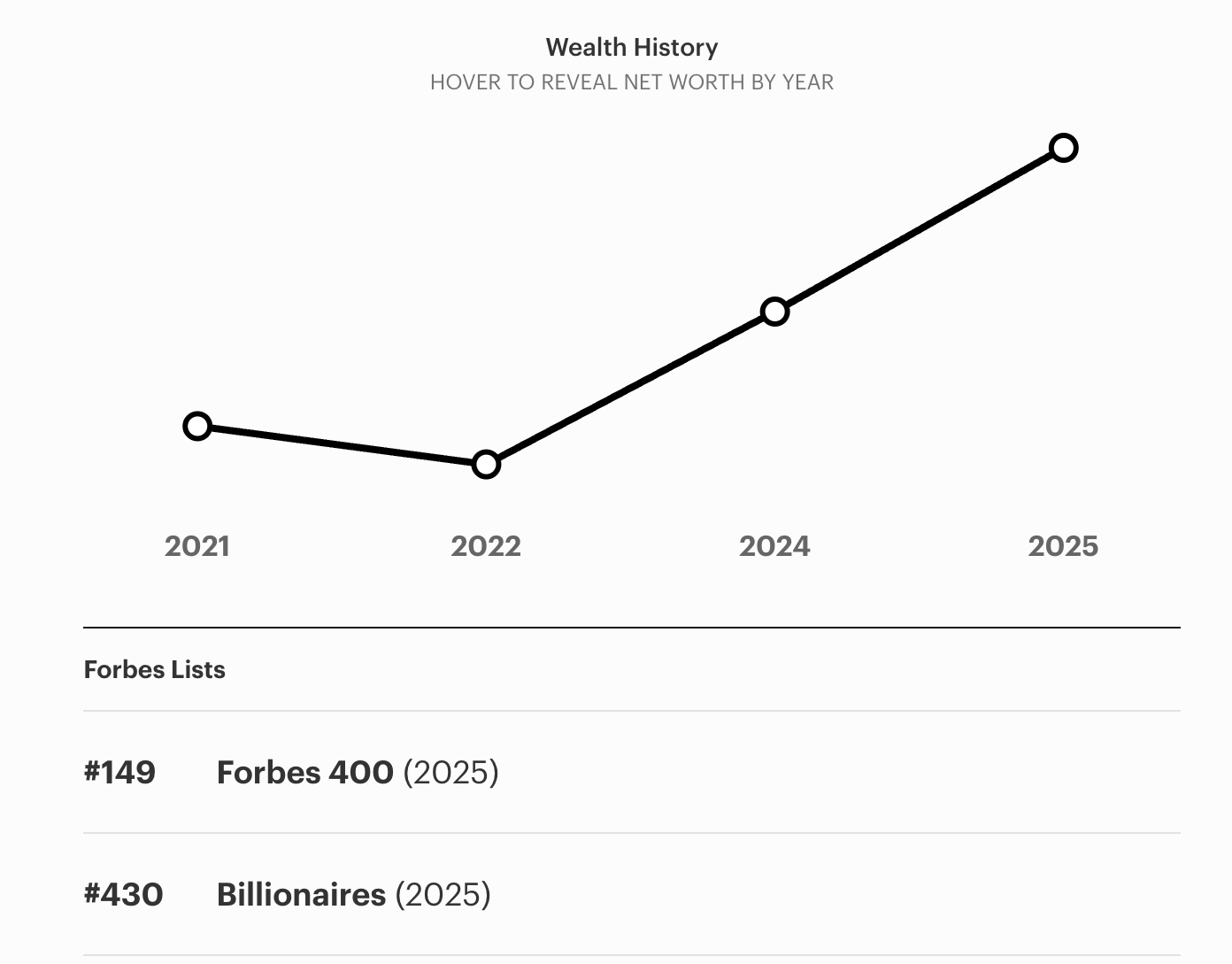
Michael Saylor's net worth has closely followed the performance of Bitcoin and, most importantly, the exploding value of Strategy stock (MSTR), which works as a leveraged proxy for the cryptocurrency.
His net worth is more than $7.4 billion according to Forbes, October 2025. This is mostly made up of his stock holdings in Strategy and his own Bitcoin stash. The MSTR stock has gone up a lot in the last few years, which means that Saylor's personal financial success is a direct result of the success of his business plan.
Conclusion
Michael Saylor has changed the way businesses think about digital assets, going as an MIT engineer to a corporate Bitcoin enthusiast. His data-driven belief turned Strategy into a publicly traded Bitcoin vehicle and made him one of the most important people in getting institutions to use crypto.
Saylor's tale shows how technology, risk, and belief can come together to change the way money works throughout the world. It also shows how one executive's vision can turn a software firm into a key part of the Bitcoin Standard.
FAQs
Is Michael Saylor married?
No, Michael Saylor is not married. He is focused on his career and his advocacy for the Bitcoin Standard.
Where does Michael Saylor live?
Michael Saylor is generally reported to reside in the Florida area, a hub for cryptocurrency and technology innovation. In a 2024 statement settling a tax dispute with Washington, D.C., Saylor declared, "Florida remains my home today".
How old is Michael Saylor?
Michael Saylor was born on February 4, 1965. As of October 2025, he is 60 years old.
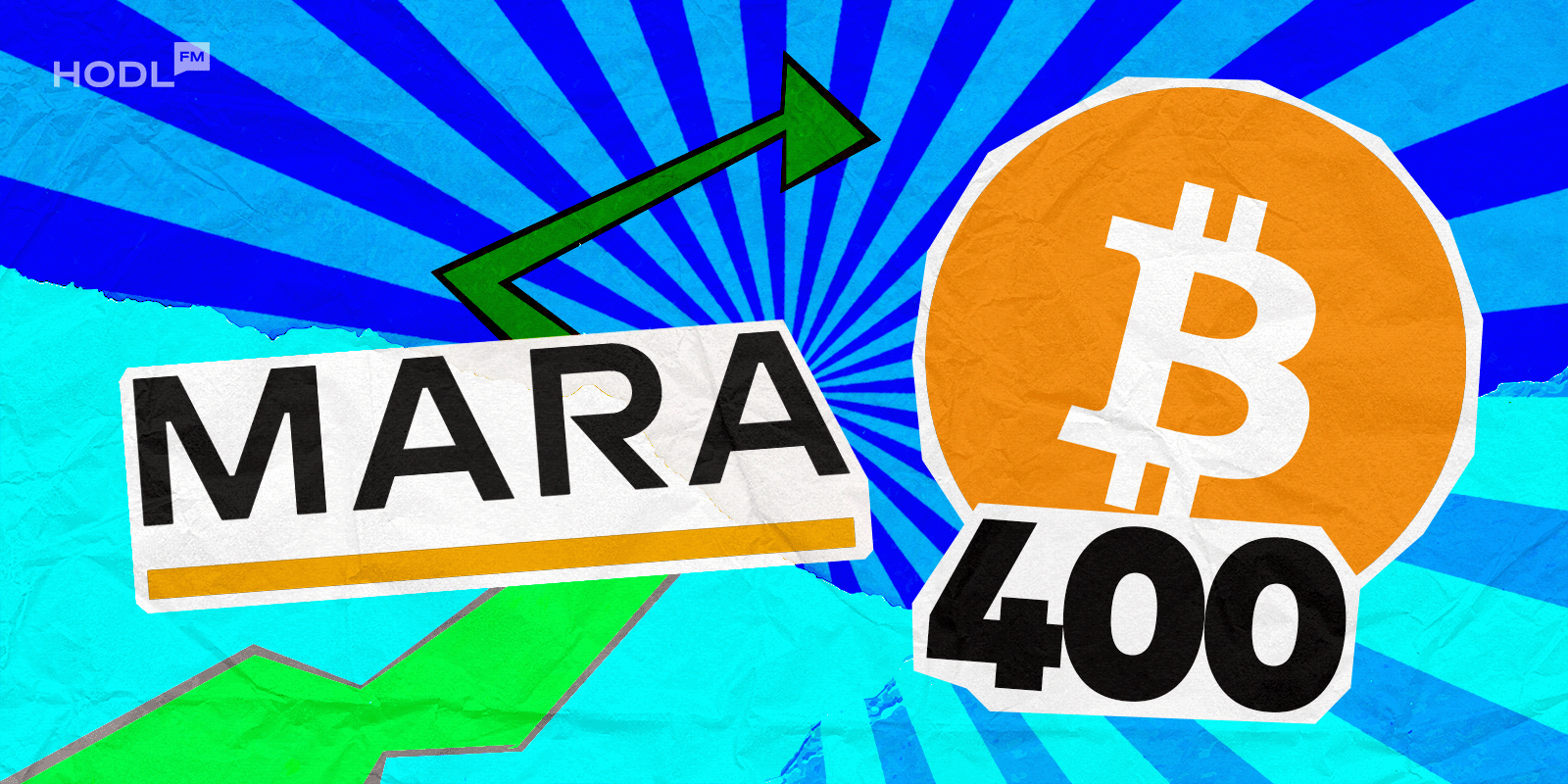
Disclaimer: All materials on this site are for informational purposes only. None of the material should be interpreted as investment advice. Please note that despite the nature of much of the material created and hosted on this website, HODL FM is not a financial reference resource, and the opinions of authors and other contributors are their own and should not be taken as financial advice. If you require advice. HODL FM strongly recommends contacting a qualified industry professional.
